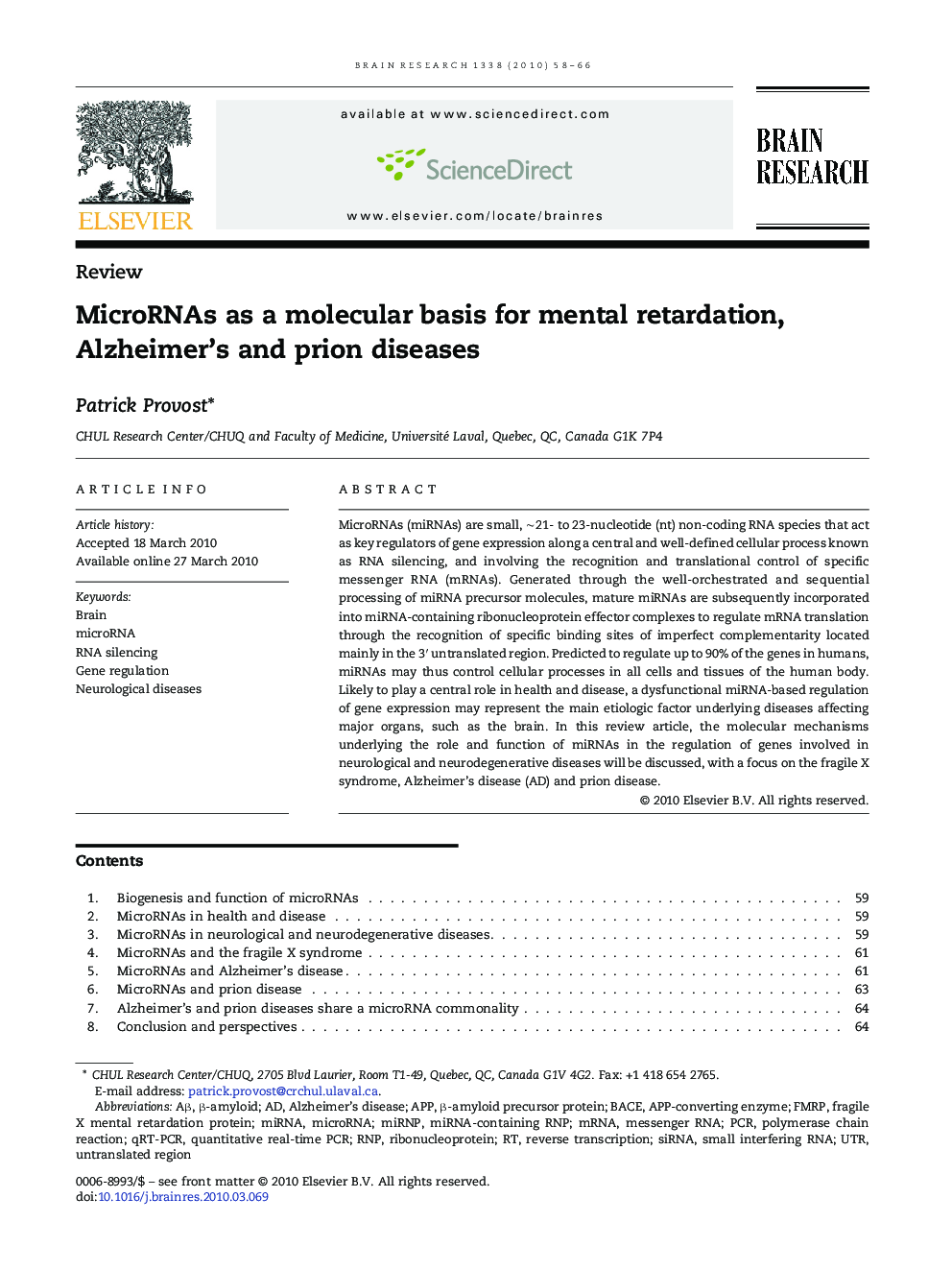| Article ID | Journal | Published Year | Pages | File Type |
|---|---|---|---|---|
| 4326944 | Brain Research | 2010 | 9 Pages |
MicroRNAs (miRNAs) are small, ∼ 21- to 23-nucleotide (nt) non-coding RNA species that act as key regulators of gene expression along a central and well-defined cellular process known as RNA silencing, and involving the recognition and translational control of specific messenger RNA (mRNAs). Generated through the well-orchestrated and sequential processing of miRNA precursor molecules, mature miRNAs are subsequently incorporated into miRNA-containing ribonucleoprotein effector complexes to regulate mRNA translation through the recognition of specific binding sites of imperfect complementarity located mainly in the 3′ untranslated region. Predicted to regulate up to 90% of the genes in humans, miRNAs may thus control cellular processes in all cells and tissues of the human body. Likely to play a central role in health and disease, a dysfunctional miRNA-based regulation of gene expression may represent the main etiologic factor underlying diseases affecting major organs, such as the brain. In this review article, the molecular mechanisms underlying the role and function of miRNAs in the regulation of genes involved in neurological and neurodegenerative diseases will be discussed, with a focus on the fragile X syndrome, Alzheimer's disease (AD) and prion disease.
